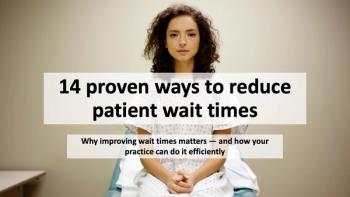
Four best practices for your Annual Wellness Visit (AWV) engagement campaigns
Only a quarter of Medicare and Medicare Advantage recipients receive an annual wellness visit.
For patients, these visits can be incredibly valuable, as they may uncover or identify areas of concern or risk that need further study or treatment.
For provider organizations, these visits represent a revenue stream left mostly untouched by those Medicare and MA patients who skip their AWV by choice or because they don’t know it is an option.
Driving AWVs can increase much-needed CMS reimbursement revenue, especially during a time when many providers are recovering from declines in revenue resulting from responses to the COVID-19 pandemic.
AWVs Close Care gaps and Generate Downstream Revenue
We looked at the data across the AWV-focused patient engagement campaigns on the SymphonyRM platform for the past two years and found:
Of the patients who completed an AWV, more than 60% received referrals for follow-up appointments.
Thirty percent (30%) of those [who received referrals] averaged three or more referrals each.
The top 3 referral types from the annual wellness visits include mammography, gastroenterology and cardiology which indicates the AWVs also have significant impact on care gap closure and Quality of Care to also deliver value to Primary Care.
Four Best Practices for AWV Engagement Campaigns
Not every patient engagement campaign is created equal, nor will they deliver the same results. For example, campaigns that cast too broad a net or fail to customize outreach
Here are some best practices based on our learnings working with health systems across the U.S.
Leverage data
Within the EHR, provider organizations can identify the patients who fall into several categories, including age. Start by focusing a campaign on those patients who are 64 years old and will be aging into eligibility for an IPPE on their 65th birthday. Once that is underway, design a campaign for those patients who are over 65 years old and eligible for initial and subsequent AWVs.
Customize the message
Most Medicare and Medicare Advantage recipients are either unaware of, or apathetic to, the AWV benefit. Therefore, a campaign should not just be designed around making it easy for an individual to complete their AWV; education should be a core pillar to demonstrate the benefit and value of preventive versus episodic care.
Measure the results
Every campaign should deliver real-time data that demonstrates how well the messages are performing. Are they driving click-throughs? AWV appointments? If the results are below expectations, revisit the criteria to ensure the right patients are targeted and that messaging is specific and clear for the call-to-action. Continue to monitor, measure, and optimize.
Set goals
Since these wellness visits are annual, healthcare organizations see the greatest results when the campaigns run annually as well. Some organizations have launched these campaigns in the New Year, when people are thinking about healthy goals and improving behaviors; others have aligned their launch to Medicare Open Enrollment, to ensure patients get the maximum benefits from their coverage. Most importantly, AWVs gain the most traction when the campaign is “Always-On”.
As the campaigns continue throughout the year, set goals and track progress. With those goals established, find ways to tweak and improve the campaign to meet, and maybe even exceed, your goal.
Goals may include:
- Book and complete 95%+ of all AWV appointment capacity annually
- Leverage AWVs to attain HEDIS compliance goals
- Reach out to every patient aging into Medicare this year
- Use AWVs to identify opportunities to expand specialty services
- Identify patients in need of behavioral health or social interventions to improve the health of our senior communities
AWVs can be a significant driver of additional revenue for organizations. They are also a critical tool for helping senior citizens live longer and healthier lives. In order to take advantage of that opportunity, provider organizations need to educate and engage patients on the value those visits deliver. Armed with the right data and plan to execute, AWVs can be turned from a “break-even” line item to one that consistently delivers value for both the health system and patient.
Newsletter
Optimize your practice with the Physicians Practice newsletter, offering management pearls, leadership tips, and business strategies tailored for practice administrators and physicians of any specialty.








